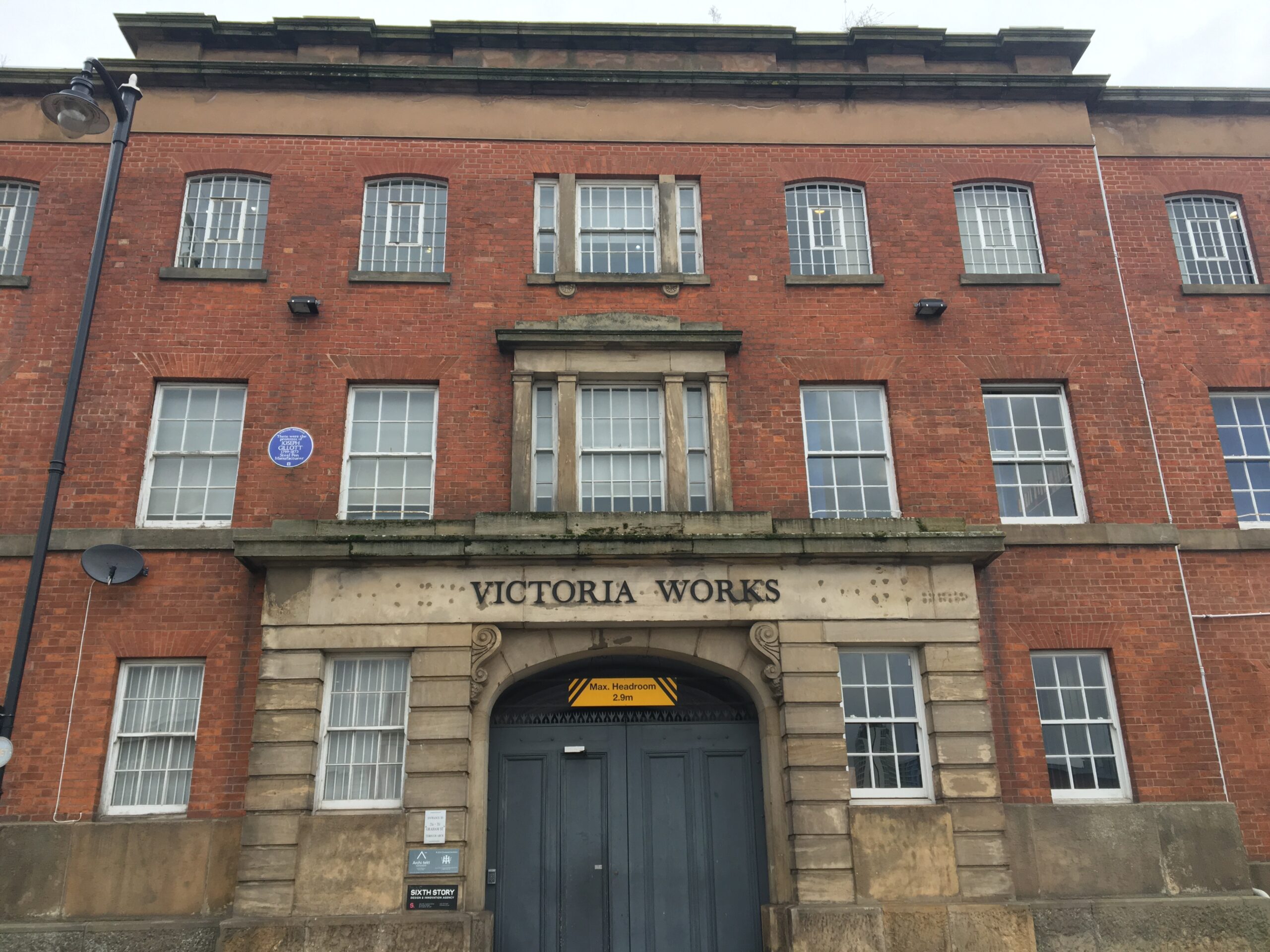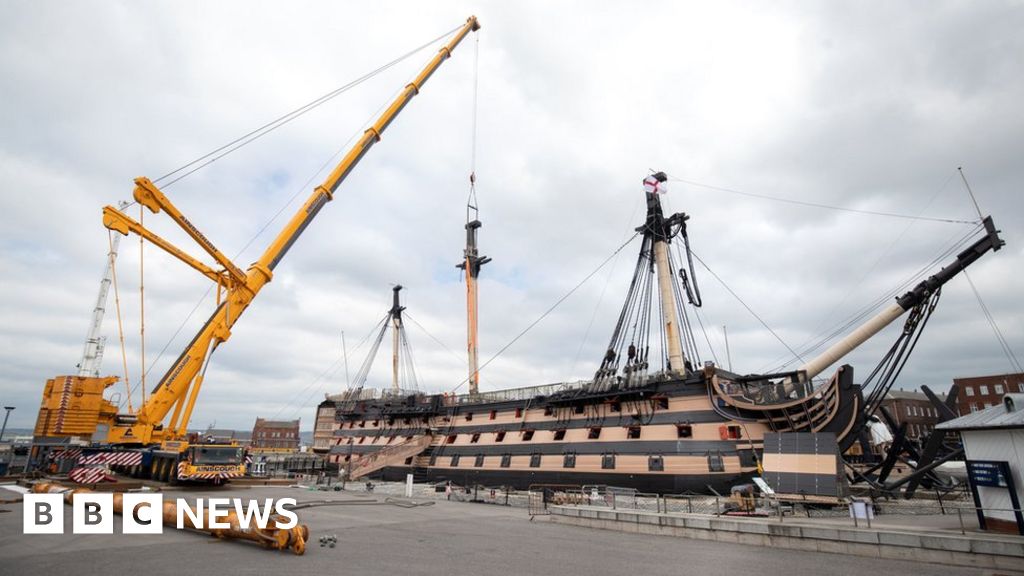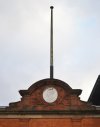Back in the 1990's, I was working in an office in the newly-converted 'Victoria Works' on Graham Street which was formerly Joseph Gillott's Pen Nib factory. I was told by some workmen who were repairing the famous Flagpole, that it was in fact a mast from HMS Victory, which Gillott had purchased. I understand Gillott was fascinated by HMS Victory and may have been one of the patrons of it's restoration. He was also a friend of the artist JW Turner, who of course famously painted the ship. I've tried to find references to the flagpole originally being a mast to no avail, though it is apparently Grade II listed - does anyone have any info or links to info please?
-
Welcome to this forum . We are a worldwide group with a common interest in Birmingham and its history. While here, please follow a few simple rules. We ask that you respect other members, thank those who have helped you and please keep your contributions on-topic with the thread.
We do hope you enjoy your visit. BHF Admin Team
You are using an out of date browser. It may not display this or other websites correctly.
You should upgrade or use an alternative browser.
You should upgrade or use an alternative browser.
Jospeh Gillott's flag pole at Victoria Works
- Thread starter Johannah
- Start date
Pedrocut
Master Barmmie
The Historic England site does not give any indication that the flagpole was from the Victory.
Also Jewelry Quarter Heritage.

 th.jewelleryquarter.net
th.jewelleryquarter.net
Also Jewelry Quarter Heritage.

Victoria Works - Research - Jewellery Quarter Townscape Heritage
Grade II listed manufactory built for Joseph Gillott to produce steel pen nibs by his new pressing method
Last edited:
mw0njm.
A Brummie Dude
it's a bit thin for a mast

 www.bbc.com
www.bbc.com

HMS Victory's lower mast removed for first time since 1894
Lord Nelson's HMS Victory's mast is removed for the first time since 1894 for "essential" work.
mw0njm.
A Brummie Dude
nterpretation & Significance
The Flag‑Pole / Flagstaff Detail
- In the listing description for Victoria Works there is a note: “the attic storey conceals a small building that stands at right angles behind the wall and through whose roof soars a mighty flagstaff.” Wikimedia Commons+1
- The listing refers specifically to: “Flagstaff building and retaining wall fronting Graham Street and returning round corner of Vittoria Street.” Wikimedia Commons+1
- This suggests that the flagstaff (i.e., the flag pole) was part of the architectural composition of the factory frontage, especially on Graham Street, added in or around 1887 when the terracotta relief of Queen Victoria was inset
- The fact that a “mighty flagstaff” was included in the design (and explicitly mentioned in the listing) suggests it was a prominent feature — likely symbolic of the factory’s status and perhaps celebrating the Jubilee of Queen Victoria (given the 1887 date for the medallion). Jewellery Quarter Townscape Heritage+1
- The wall with Tuscan pilasters and the medallion of Queen Victoria flanked by palm fronds (at the centre of the Graham Street stretch) is the façade through/behind which the flagstaff rises. Wikipedia+1
- That the listing describes the building as “including (formerly listed) Flagstaff and Retaining Wall” indicates the flagpole was notable enough to be separately listed at one time, though possibly the flagstaff itself might no longer be extant or in its original state. Wikimedia Commons+1
Pedrocut
Master Barmmie
That could be a significant find !
“…flagstaff (i.e., the flag pole) was part of the architectural composition of the factory frontage, especially on Graham Street, added in or around 1887 when the terracotta relief of Queen Victoria was inset…. likely symbolic of the factory’s status and perhaps celebrating the Jubilee of Queen Victoria (given the 1887 date for the medallion.”
HMS Victory’s lower wooden masts were replaced with wrought-iron masts (ex-HMS Shah) in 1887–1893 during urgent conservation. In other words, Victory wasn’t losing a spare wooden mast to be sold off to Gillott in 1887; she was gaining iron masts. (SNR)
“…flagstaff (i.e., the flag pole) was part of the architectural composition of the factory frontage, especially on Graham Street, added in or around 1887 when the terracotta relief of Queen Victoria was inset…. likely symbolic of the factory’s status and perhaps celebrating the Jubilee of Queen Victoria (given the 1887 date for the medallion.”
HMS Victory’s lower wooden masts were replaced with wrought-iron masts (ex-HMS Shah) in 1887–1893 during urgent conservation. In other words, Victory wasn’t losing a spare wooden mast to be sold off to Gillott in 1887; she was gaining iron masts. (SNR)
Pedrocut
Master Barmmie
“HMS Victory’s lower masts were replaced with wrought-iron masts (from HMS Shah) in 1887, and her steel topmasts were fitted in the 1920s—part of long, well-documented conservation cycles. Provenance of removed masts is normally recorded by the Navy/NMRN,
(Society for Nautical Research forum and NMRN updates.)
(Society for Nautical Research forum and NMRN updates.)

